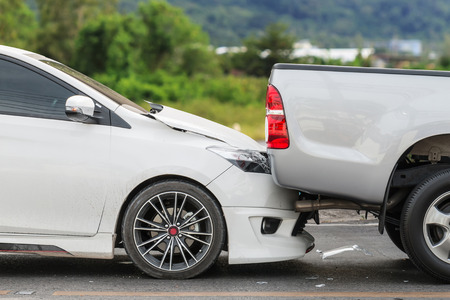

Don’t be a New Year’s Car Accident Statistic
New Year’s is one of the busiest long-distance travel periods of the year with an increase of 23 percent, compared to the average number of long distance trips during the rest of the year. About 91 percent of travel over the holidays is done by motor vehicle to domestic locations (99 percent). Combine this extra travel with lots of parties and an increase in alcohol consumption, and it is a recipe for more car accidents.
According to the Highway Traffic Safety Administration (NHTSA), New Year’s Eve and New Year’s Day bring an increased rate of fatal car crashes. If you or your family is injured in a New Year’s car crash, contact a car accident attorney right away. There is no cost to you; attorney fees are paid out of the settlement.
Holiday Accident Statistics from NHTSA
Read More

2008-2011 Car Crash Statistics
The National Highway Traffic Safety Administration has just released their latest report on car crash statistics covering 2008-2011. It is important to understand accident statistics in the context of driver behavior and safety features in vehicles so that we can decrease accidents and corresponding fatalities and injuries with education and improved safety features.
Fatalities and Injuries in Non-Traffic Crashes
On average, 1,621 people were killed each year in non-traffic car accidents between 2008-2011. Approximately 39 percent of these people were not in the vehicle and were pedestrians or bicyclists. On average, 91,000 people were injured in car accidents in each of these years and 35 percent of those were non-vehicle occupants.
Child Fatalities and Injuries in Non-traffic Crashes
Between 2008-2011, non-traffic car accidents took the lives of about 1,043 children under the age of 14. Thirty thousand children were injured in car accidents during the same time frame. Interestingly, about 85 percent of those killed and 60 percent of those injured were not occupants of the vehicle but were instead pedestrians or bicyclists. Eighty-four percent of the non-occupant children who died were aged four and younger. In 2012, there were 33,561 fatalities from traffic accidents and children 14 and younger accounted for just three percent of them.
Distracted Driving
In 2012, ten percent of all fatal car crashes, 18 percent of car crashes resulting in injuries, and 16 percent of all car crashes were as a result of distracted driving. Distracted driving includes cell phone use, eating, talking to other passengers, adjusting the radio, applying makeup, etc.
Senior Drivers
In 2012, 5,560 people aged 65 and older were killed and 214,000 were injured in car crashes. Senior drivers were involved in 17 percent of all traffic fatalities and nine percent of all people injured in traffic crashes during the year. The 2012 numbers showed a 16 percent increase in senior driver fatalities over 2011.
Seat Belt Safety
In 2012, 21,667 passengers in motor vehicles (passenger cars, pickup trucks, vans, and SUVs) died in car crashes. Of these occupants, 9,679 were wearing seatbelts (restrained). It was not known whether 1,653 of these occupants were restrained. Where it is known definitively, 52 percent of passengers who died in motor vehicle crashes were not restrained at the time of impact.
Use of Electronic Devices While Driving
Research showed that the percentage of drivers’ text messaging or visibly using their hand-held electronic devices increased from 1.3 percent in 2011 to 1.5 percent in 2012. Hand-held cell phone use remained stable at five percent of drivers with usage higher among female drivers and those between the ages of 16 and 24 years old.
Accidents with Large Trucks
In 2012, there were 3,921 people killed and 104,000 people injured in 317,000 car crashes involving large trucks. Large trucks have a gross vehicle weight rating greater than 10,000 pounds.
2013 Projection
A projection for the first nine months of 2013 shows that an estimated 24,270 people died in car crashes during that period. These numbers are a welcome decrease of about 3.7 percent when compared to the 25,214 fatalities that occurred in the first nine months of 2012.
If you or a loved one were involved in a car accident, do not hesitate to seek the help of a knowledgeable car accident attorney. The insurance companies are there to pay you the lowest settlement possible; it is not uncommon that a victim who hires an accident lawyer receives up to three times the settlement of someone who fights alone. Please call the caring, experienced accident attorneys at Tario & Associates, P.S. today for a FREE Consulation.
Read More

Car Accidents: Men versus Women
It’s an age old joke: women are bad drivers. Or are they? Women don’t seem to think so; a recent MetLife study found that 51 percent of them say that females are safer drivers. Of the men surveyed by MetLife, 39 percent said that male drivers were safer and 35 percent weren’t sure which gender was safer.
The statistics don’t lie! Quality Planning Research found that men are 3.4 times more likely than women to get a ticket for reckless driving and 3.1 times as likely to be caught drunk driving. Women tend to drive less aggressively and follow the rules of the road more closely which leads to fewer accidents. Compounding the issue, men are also more likely to violate laws for speeding and passing and yielding. These types of violations can lead to bigger accidents and more expensive claims than the minor fender benders caused by women.
Higher Death Rates for Men
There is no contest when it comes to death rates between men and women in automobile accidents. In 2009, more than 11,900 male drivers died in U.S. traffic accidents, compared with just under 4,900 female drivers. Men died at a rate of 2.5 deaths per 100 million miles traveled versus 1.7 deaths per 100 million miles traveled for women. Teenage boys are particularly prone to carnage with 9.2 deaths per 100 million miles travelled compared to 5.3 deaths for teenage girls. Men take more risks behind the wheel and are therefore more likely to get into a serious car accident that causes serious injury or death. The numbers become about equal in the 70 plus age range, so age does appear to be a factor in risky behavior behind the wheel.
Women Pay Lower Car Insurance Rates
Insurance companies don’t care about old jokes or stereotypes; they are looking at the bottom line. Men cause more accidents and therefore have more claims so they pay higher premiums. Overall, women pay about 9 percent less for auto insurance than men. In Washington State, women pay 9.6 percent less than men ($596 versus $659 for a six month policy).
Why do Women Pay Lower Car Insurance Rates?
- Women are almost 50 percent less likely than men to have a DUI/DWI on their driving record
- Women are approximately 10 percent less likely to have a moving violation on their record
- Women tend to own vehicles with a lower value which makes them less expensive to insure ($22,815 versus $24,861)
- Women are less likely to request insurance for multiple drivers/vehicles
There is some silver lining for Men: they do appear to have more automotive knowledge than women. For example, men are more familiar with vehicle safety equipment such as electronic stability control, which can help prevent rollover accidents. In truth, men ages 16 to 29 are skewing accident statistics against men of all ages since older men seem to take fewer risks and therefore cause fewer accidents. Sadly, teenage girls seem to be playing catch up. They are beginning to cause more accidents because of distracted driving.
If you or a loved one were injured in a car accident, you have enough to deal with. Let an experienced accident attorney fight for the full compensation that you deserve. It is not uncommon to receive a settlement from the insurance company that is two to three times bigger with the help of a lawyer. Call the caring accident attorneys at Tario & Associates, P.S. today for a FREE consultation!
Read More